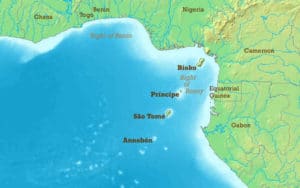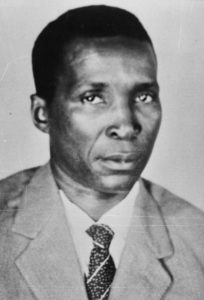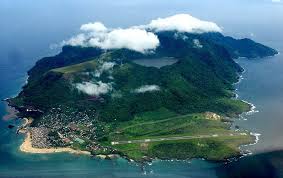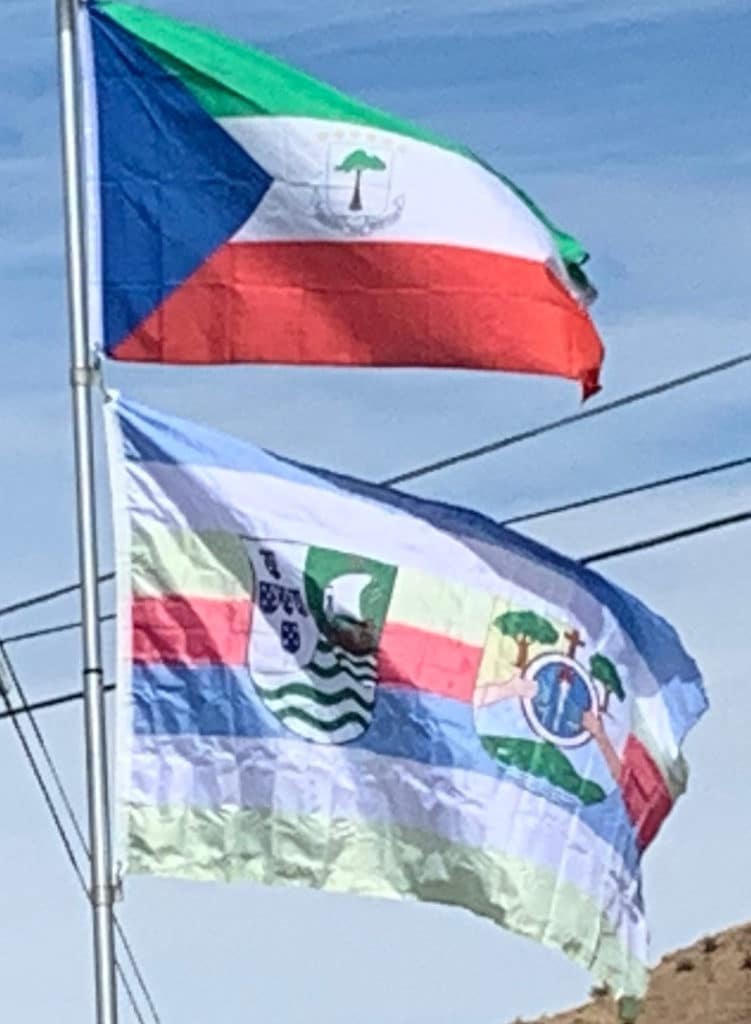Introduction:
Annobón, also spelled Anabon and formerly as Anno Bom and Annabona, is a province of Equatorial Guinea consisting of the island of Annobón and its associated islets in the Gulf of Guinea and Atlantic Ocean’s Cameroon line.

The provincial capital is San Antonio de Palé on the north side of the island; the other town is Mabana, formerly known as San Pedro. The roadstead is relatively safe, and some passing vessels take advantage of it in order to obtain water and fresh provisions, of which Annobon has offered an abundant supply. However, there is no regular shipping service to the rest of Equatorial Guinea, and ships call as infrequently as every few months. According to the 2015 census it had 5,232 inhabitants, a small population increase from the 5,008 registered by the 2001 census. The official language is Spanish but most of the inhabitants speak a creole form of Portuguese. The island’s main industries are fishing and timbering.
Etymology:
Annobón derives its name from Ano Bom (lit. “Good Year”). It was named for the date of its discovery by the Portuguese on New Year’s Day (Portuguese: Dia do Ano Bom) in 1473.
During the final years of the

administration, the island was called Pigalu and Pagalu, from the Portuguese papagaio (parrot).
History:
The island was discovered by the Portuguese on January 1, 1473; it obtained its name from that date (“New Year”). However, Spanish explorer Diego Ramirez de la Diaz first spotted the island in 1470 and named it San Antonio. It was apparently uninhabited until colonized under the Portuguese from 1474, primarily by Africans from Angola via São Tomé Island. These slaves (who the Portuguese called escravos de regate) are considered the first members of Annobonese society.
Beginning in the early sixteenth century, many of these slaves who were now marrying Europeans gave birth to the next generations of Annobonese who were called forros (slaves about to be free). Forros began to develop a distinct identity and socio-economic powers. This period also saw the emergence of the Creole Annobonese language.
The island was passed to Spain by the 1778 Treaty of El Pardo. The treaty granted Spain control of the Portuguese islands of Annobón and Fernando Po (now Bioko) and the Guinea coast between the Niger and the Ogooué in exchange for Spanish acceptance of the Portuguese occupation of territories in Brazil west of the line established by the Treaty of Tordesillas. The Spanish colony thus formed would eventually be known as Spanish Guinea.

The island’s populace was opposed to the arrangement and hostile toward the Spaniards. After the handover and when the Spanish flag was hoisted to affirm Spanish sovereignty, the islanders revolted against the newcomers, in part because they were considered heretical for placing dogs on their flag. (The actual design represents lions.) They expelled them according to a tradition of throwing witches to the sea. A state of anarchy ensued, leading to an arrangement by which the island was administered by a body of five natives, each of whom held the office of governor during the period that elapsed until ten ships landed at the island. This autonomous government continued, with the island claimed by both Spain and Portugal, until the authority of Spain was re-established in the latter part of the 19th century. The island briefly became part of the Elobey, Annobón and Corisco colony until 1909.
